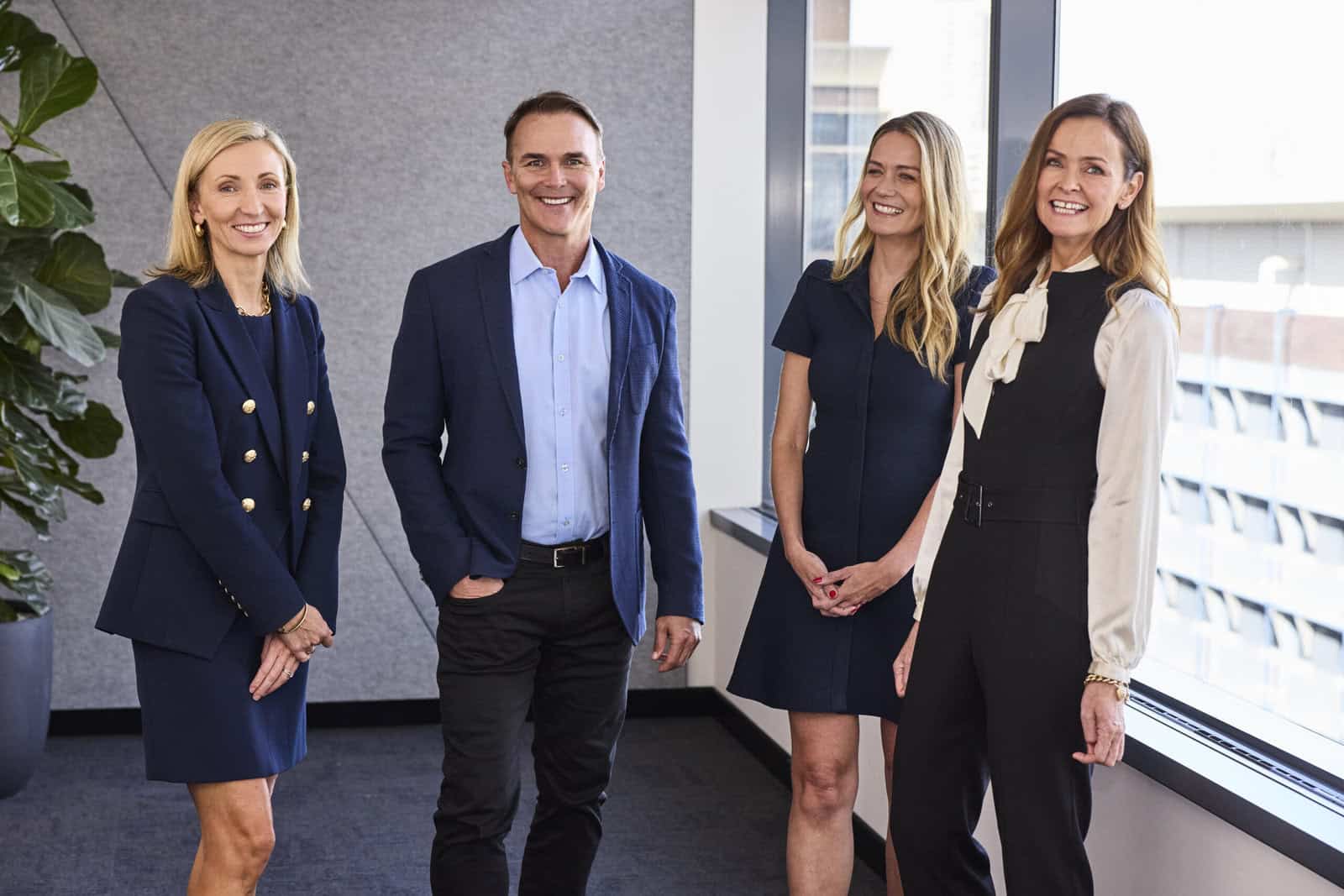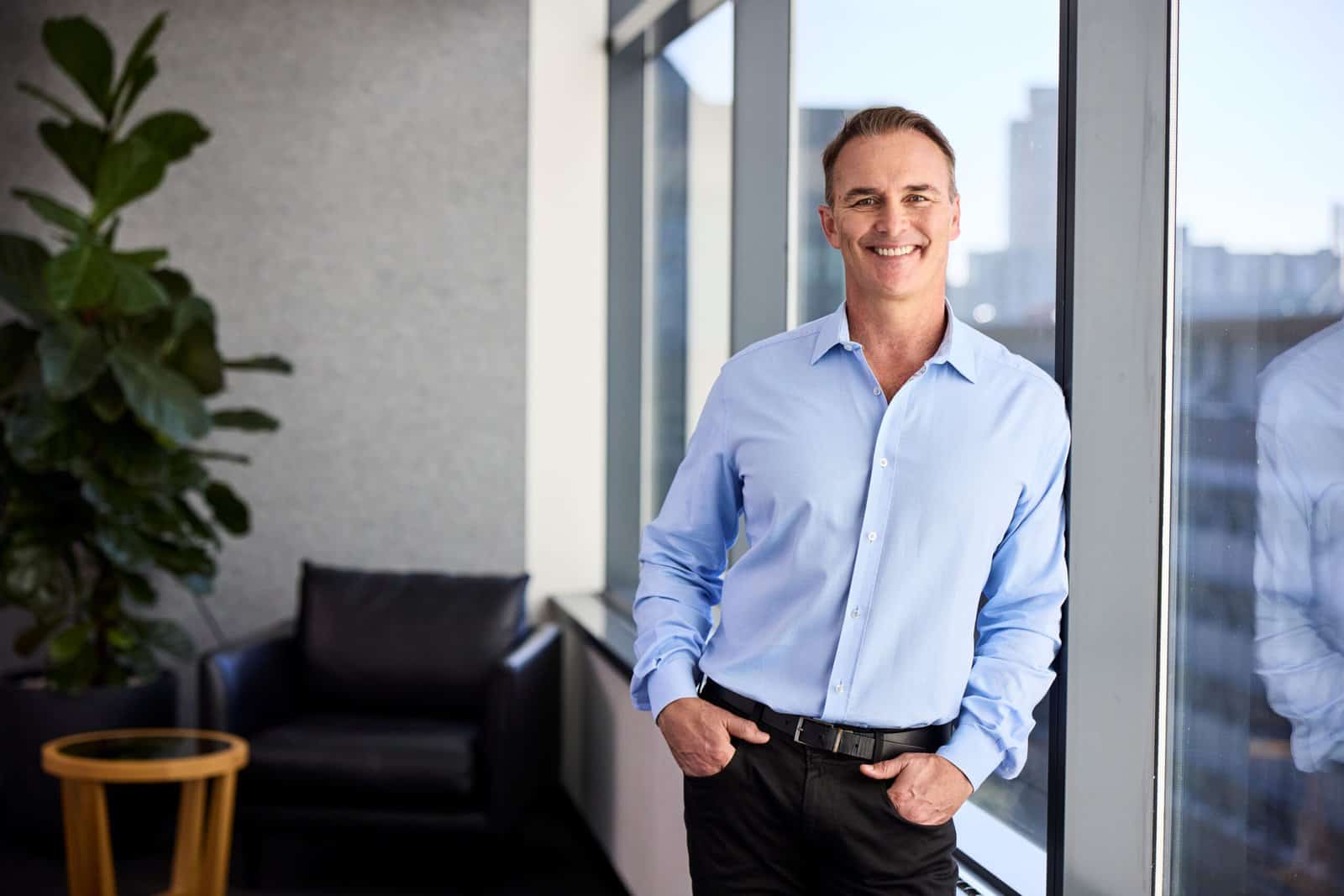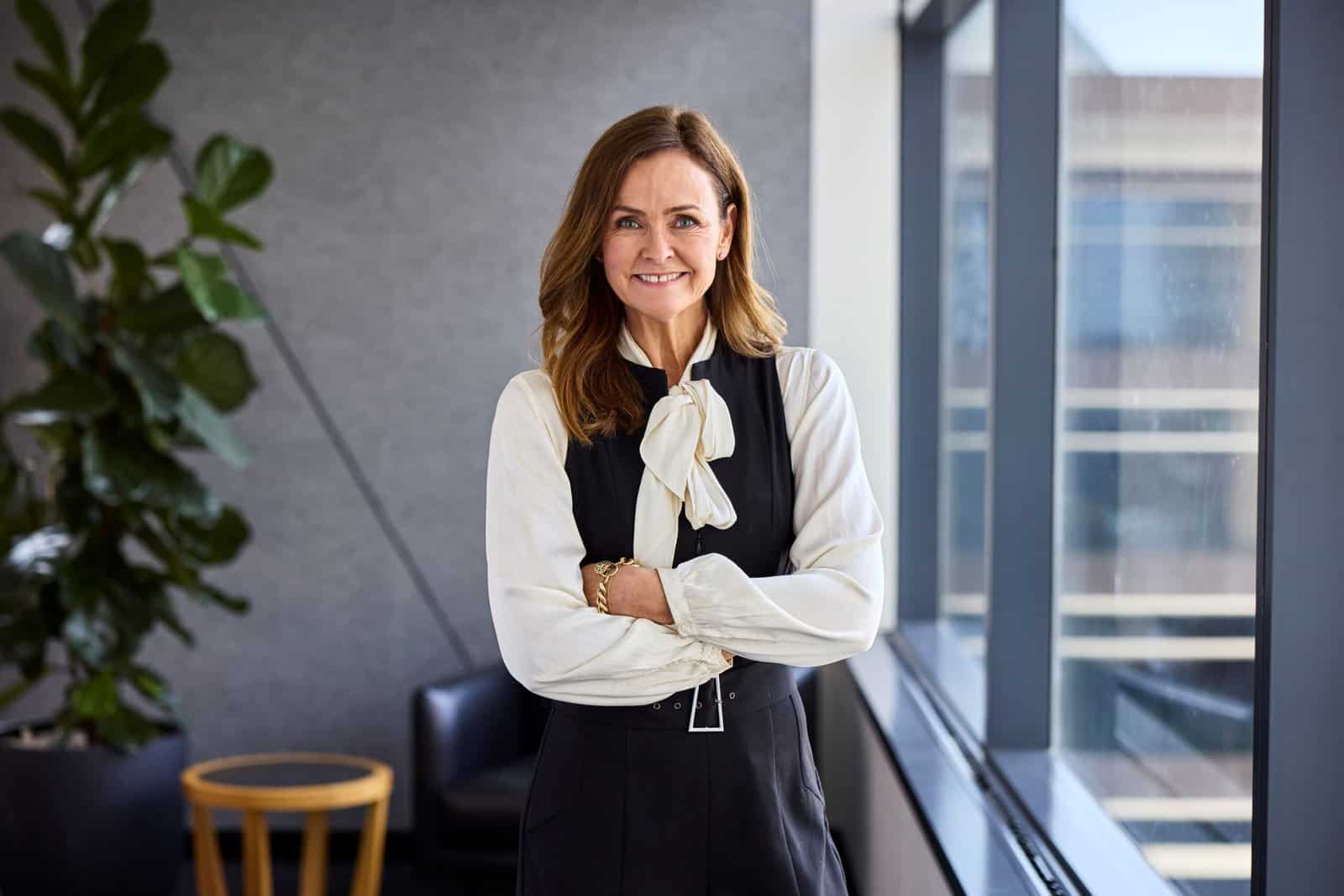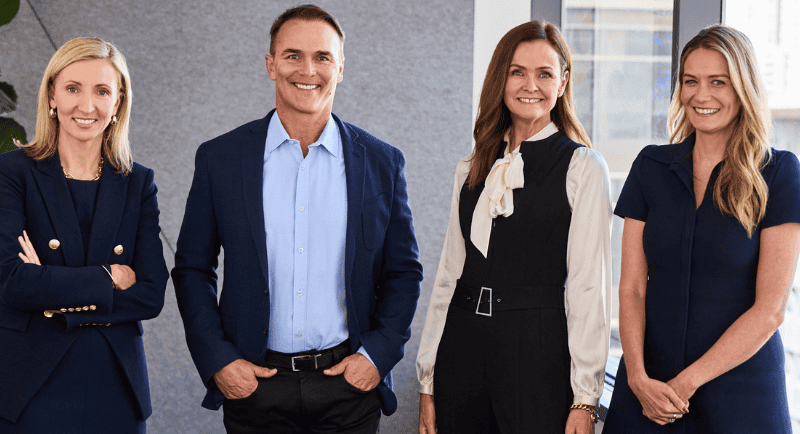There’s been no shortage of commentary in the market about the changing face of TV. From the size of linear TV audiences, to the rise of streaming TV, to the revolution in TV ratings.
To gauge one view of where the TV business is heading, Mediaweek met with Seven’s chief revenue officer Kurt Burnette. Joining him in our round table were national sales director Georgie Nichols, director 7RED Katie Finney, and national digital sales director Rachel Page.
The discussion started around audiences – both the size and how they are being bought and sold.
“In line with the changes in how people are viewing content, the way TV is being sold is changing too,” Burnette said. “Seven has metro, regional and digital distribution. In the past people have bought that separately. Some still do.
“But I can’t remember the last time I walked into a client and said, ‘Can we just talk about linear TV please.’ We now just talk about an audience. How you get to the audience does not matter to a client.
“We feel that in the future the audience that watches premium video will be traded as one. Clients will be able to hit that audience in mass. Or they can decide to target to an addressable audience.”
Burnette said Seven was aiming to be able to offer a 100% addressable audiences by 2028-29. To successfully meet that target, Seven is making sure it has the right people, the right platforms and the right content.
“We believe we are leading the way in convergence – combining the audience available on metro, regional and digital. We want our customers to come on that journey with us.”
Key to Seven’s commercial future is the introduction of Total TV trading platform Phoenix, and its internal sales structure.
Looking at his colleagues during our discussion, Burnette explained: “This is the leadership team to take us into the future.”
Seven’s sales leadership team
Georgie Nichols: Burnette – “Our national director of sales comes with an agency background in agencies and on the client side at Telstra.”
Katie Finney: “Been with Seven for many years. She’s worked in program partnerships and strategy. She works very closely with clients and she has a great understanding of how our content teams work. Leading to opportunities for clients to integrate within that.”
Rachel Page: “Our national digital sales director. She comes with experience from IMG, Network 10 and oOh!media.”
After introducing the sales leadership team, Burnette discussed the TV market landscape.

Seven’s sales leadership team [L-R] Georgie Nichols, Kurt Burnette, Katie Finney, and Rachel Page
SVOD: No room for a new player
“Right now there are two major things we believe can happen. When you look at SVOD, we believe there is no room for any more players. We are now where we are going to be. If HBO Max comes, it would replace something at Foxtel.”
Burnette did make one footnote: “There could be room for one massive gamechanger. That is the free digital streaming rights for the AFL and cricket on Seven.”
He also made reference to the impact that SVOD ad tiers could have. “There will be change when Prime Video, Disney+ and Paramount+ join Netflix and Binge with an ad tier.”
Linear viewing trends and Seven’s USP
When talking about the audience for traditional, linear TV viewing, Burnette said you could call those audience numbers flat. “There has been stability in the numbers year-on-year. With BVOD growing at 20-30%, there is total growth for FTA TV.”
He noted also the one thing that most of the SVOD players don’t have: a linear FTA service. “The combination of a free linear channel with scaled reach, with the support of digital and BVOD, is going to be the USP.
“How we sell that is convergence, which is our strategy. There is an exciting future ahead, but it will be different.”
Burnette said there is an education piece to work on about the perception of what is TV. “We still sit in rooms where people say they don’t watch television. Except they then say they get to see Australian Idol or MAFS or they watched the Women’s World Cup. We explain to them that’s what television is.
“We need to do a better job as an industry to let people know what is going on.”

Kurt Burnette
Measuring FTA with SVOD
One of the hopes for the reporting of TV is that the streaming platforms join to share audience data with advertisers. In the UK, Netflix, and Prime Video are included in the TV ratings as measured by BARB. Burnette wants more players measured here too.
Brunette: “There is a call to arms from Seven, Nine, 10 and SBS, Foxtel too, to come together and be collaborative. We want all the SVOD players involved to make it easier for all of our customers to engage with us.”
Nichols: “Having that data will help the traders in all of the agencies and the clients want to see it too.”
Page: “It is important to get an understanding of what the audiences are for an ad tier.”
Seven’s utopian trading world
“Imagine a world where there are no make goods, there are no under deliveries or over deliveries,” Burnette said. A make good happens when an advertiser doesn’t get what they expected in terms of audience. They then are given a make-good: bonus spots to boost the reach to what was sold.
“How we are doing that is optimising the linear inventory to deliver the optimum way to get to an audience in real-time. On digital we are working with AI company Databricks to predict exactly what the audience is going to be.
“Even now, make goods and under deliveries are pretty rare. We will eventually completely get rid of them.”

Georgie Nichols
Phoenix being likened to Kaizen – The Japanese way of working
The Cambridge Dictionary calls Kaizen “a Japanese way of running a company by always trying to improve the way people work and what they do”. It’s a term used by Burnette to describe the concept driving trading system Phoenix.
Page: “Our teams will be converged [in Phoenix]. We are already working towards that. That’s why I am here. We are all working very closely together every day. Our staffs in regional, or in digital, are already working on how trading will look – converged in Phoenix.”
Nichols: “We are already trialling that in the Brisbane market. The team there is already converged. Some of the smaller independent and direct teams are also doing that in Sydney and Melbourne. We have already done 50 converged tests and we want to have about 100 tests. They have been very successful.
“It’s all about the audience and the screens. It doesn’t matter where they are viewing, it’s about how we reach them.”
Finney: “We have brands that want to show up in a big way and connect with cultural moments. They can be integrated through all of Seven’s screens and beyond off-network. The audience can be mass, or super-targeted using 7Red IQ. We need to cater for all our different advertisers and how they want to be working with us.”
See also: Seven Upfront 2024 – Meet Phoenix, Seven’s total TV trading system
Using AI for content guidance
While AI is helping predict audience delivery closely after a show launches, Burnette said Seven still uses is content team to commission from the best content creators.
“They can use our data to help them make decisions though. Made in Bondi comes from an insight we gleaned from younger people on 7plus and their viewing habits.”

Rachel Page
New format Dream Home a magnet for brands
While advertisers are happy to take the audience however it comes, many have a desire to be in certain shows.
Finney: “We have brands who want to be associated with our biggest sporting events and our tentpole programming. We have just had ING come on as or finance partner on Sunrise. They want to be having a conversation with viewers when they are making decisions in the morning.
“On our new format Dream Home, we have the most brands we have ever had on a new format. Because we are in a cost-of-living crisis people can’t afford to renovate their homes. They are looking to do some of the work themselves. Brands want to be part of that.”
Nichols: “We have so many clients who get the power of TV. There are people who are really interested in women in sport for example. We are able to work with them across women in AFLW and women’s cricket with the WBBL. Those are cultural moments when brands tell us they want to amplify their message.
“We also still get clients who come to us wanting direct response. We are working on a trial from midnight to dawn with a specific client to test what they can do from a performance point of view in that space.
“We talk to clients about all aspects of the funnel and how we can help them from brand to conversion.
“Because we have such diversity of experience in the leadership team, we can make sure we can deliver to whatever that client might need.”
Page: “Brand or performance – we can deliver on both. We have deterministic data and predictive data. We can look retrospectively or look into the future. We have some amazing premium ad format products in terms of shoppable and others.”

Katie Finney
Finney: “When it comes to measurement we work with a lot of third party research providers to make sure we are delivering. They include Gemba, Adgile, Marketing Science. It depends on what we are trying to measure.
“We have been working with Gemba since 2020 on our sponsorships for both entertainment and sport. We benchmark every year how our different assets are working. We now have over 200+ studies now with Gemba.”
Nichols: “That’s why we have so many clients who come back year after year. Particularly from a sport perspective. We do that measurement every year and they can see the impact on brand and sales.
“There is so much negativity associated with some of the discussion around the decline of linear. It’s important to look at the strength of the content we do have. We are in audience growth for H2 last year and we were in growth over the summer. We have also grown audience in Q1 2024.
“One of the things important to us is how strong our tentpoles are. We have seen growth in all of them including Australian Idol up against some very strong competition from Nine.
“Still to come is what might be the best-ever season of Dancing with the Stars. There’s strong content for younger audiences including Stranded on Honeymoon Island and Made in Bondi.
“As an industry, our audiences have stabilised from a linear perspective.”
Seven as a fundraising force and behind the negative news
Burnette stressed that his sales leadership team is about driving the very best culture. “We call it people first and we drive it particularly hard. As a company we do things like raise $77m for Perth Telethon, $23m for the Good Friday Appeal at Melbourne’s Royal Children’s Hospital and $2m+ for the Big Freeze FightMND appeal. That’s over $100m in charity.
“Overall there is a lot of good that comes from not just Seven, but other domestic media players too.”
Burnette was making his comments in a week where the headlines about what might have gone on in the company were front page.
“What has been seen over the last few weeks, we do not recognise that behaviour. We are reading it like everybody else. There are a lot of dedicated and committed people who work here who are devastated about what they are reading. A lot of it is incorrect. But clearly some mistakes have been made, and we feel it has been acted on pretty quickly.
“People who make comments about Seven need to realise there are a lot of good people in this organisation doing good work.”
